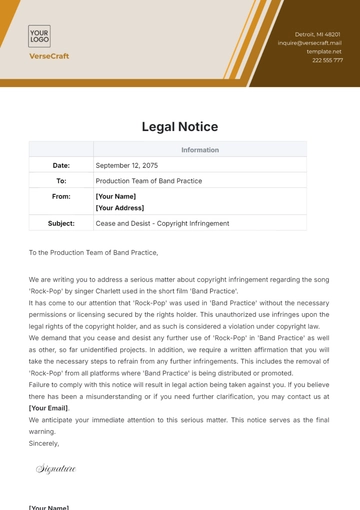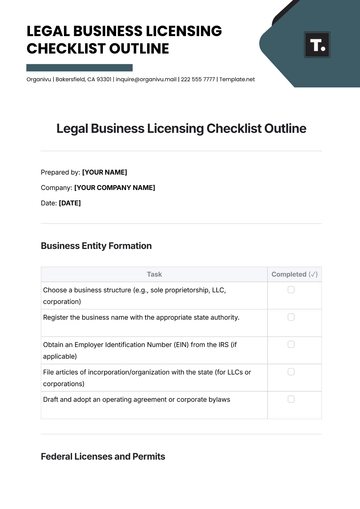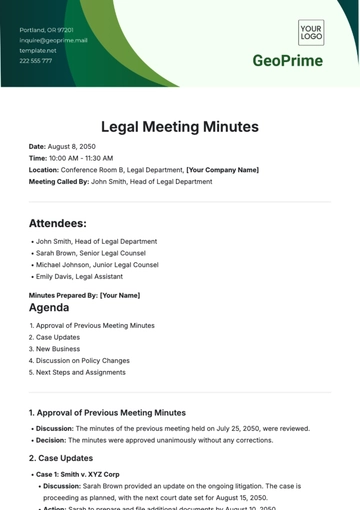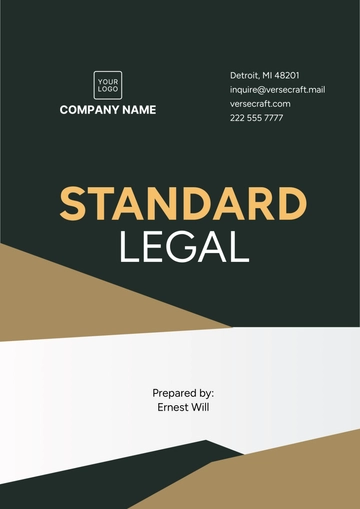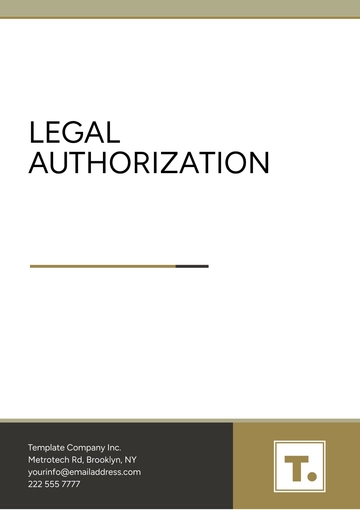Case Brief Summary
Case Overview
Case Name: Jordan v. Global Enterprises Ltd.
Court: Supreme Court of New England
Date: January 15, 2060
Case Number: 2050-XY1234
Parties Involved
Plaintiff: Jane Jordan
Defendant: Global Enterprises Ltd.
Counsel for Plaintiff:
Name: [Your Name]
Firm: [Your Company Name]
Email: [Your Email]
Counsel for Defendant:
Name: Laura Bennett
Firm: Bennett & Partners
Email: laura.bennett@bennettlaw.com
Facts of the Case
Jane Jordan, an employee of Global Enterprises Ltd., filed a lawsuit alleging wrongful termination following her complaint about unsafe working conditions. Jordan contends that her dismissal was retaliatory and in violation of labor protection laws. The defendant asserts that the termination was due to performance issues and not related to her complaint.
Issues
Was Jane Jordan’s termination a result of retaliatory action by Global Enterprises Ltd.?
Did Global Enterprises Ltd. violate labor protection laws regarding workplace safety and employee rights?
Court's Analysis
The court examined the evidence presented, focusing on:
Documented Safety Complaints: Jordan’s complaints about unsafe working conditions and the company's response to these complaints.
Performance Records: The performance evaluations and disciplinary records of Jane Jordan.
Witness Testimonies: Statements from colleagues and supervisors regarding Jordan’s work performance and the circumstances of her termination.
The court found that while Global Enterprises Ltd. had documented performance issues, the timing and context of Jordan’s dismissal raised sufficient concern to warrant a detailed examination of the alleged retaliation.
Judgment
The Supreme Court of New England ruled in favor of Jane Jordan. The court concluded that Global Enterprises Ltd.’s actions constituted unlawful retaliation, and Jordan was entitled to damages for lost wages and emotional distress. Additionally, the court mandated that the company implement stricter policies on workplace safety and employee grievance procedures.
Remedies Awarded
Remedy Type | Amount | Details |
|---|
Compensatory Damages | $250,000 | For lost wages and emotional distress |
Punitive Damages | $100,000 | To deter future retaliation |
Policy Reforms | N/A | Implement new safety and grievance policies |
Legal Precedents
The ruling was influenced by previous cases including Smith v. Corporate Inc. and Doe v. Big Corp., which established standards for evaluating retaliation claims and workplace safety compliance.
Contact Information
For further details or inquiries regarding this case, please contact:
Firm: [Your Company Name]
Email: [Your Company Email]
Name: [Your Name]
Email: [Your Email]
Case Brief Templates @ Template.net




